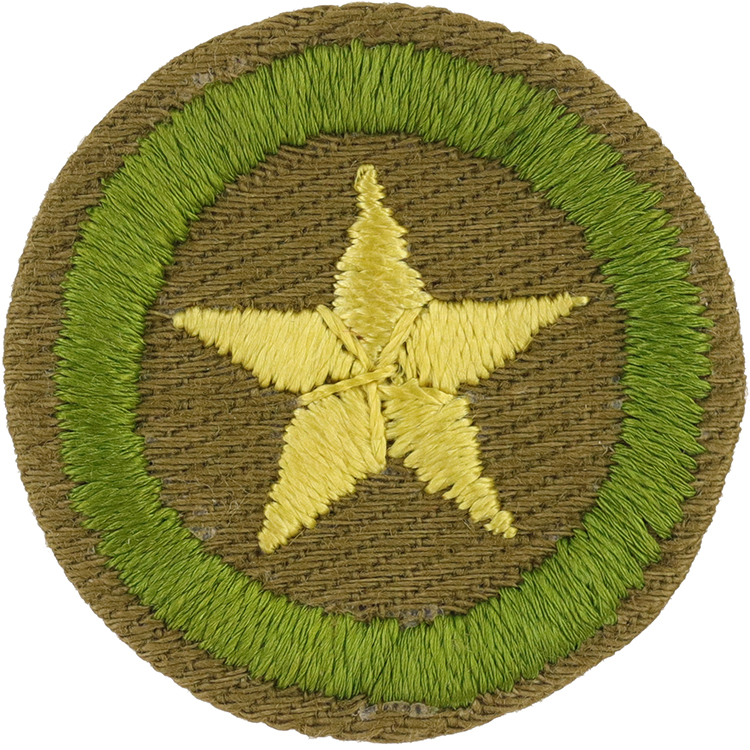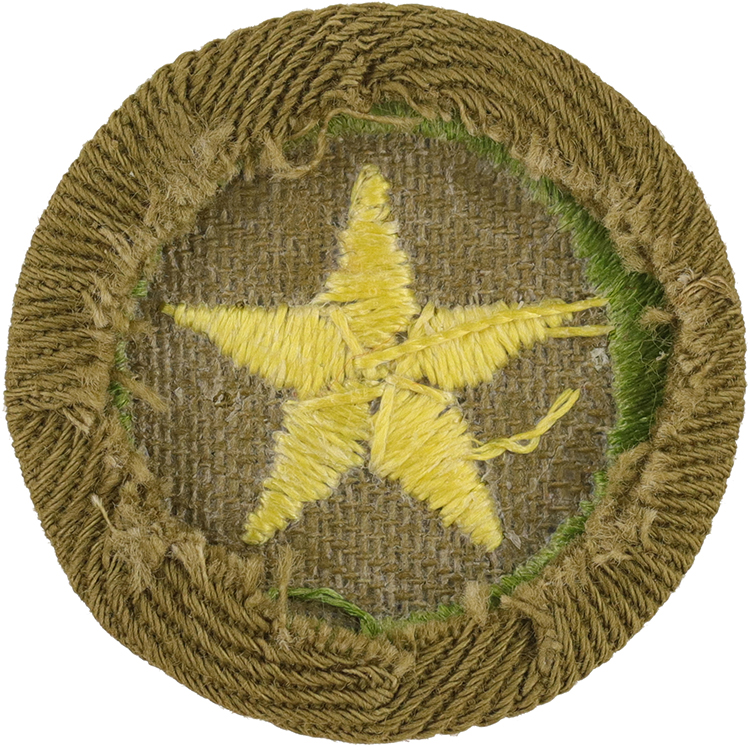
Fig. 1: Astron-C4-Front
- Cloth: Lightweight tan right twill
- Embroidery: Cotton loop continuous

Fig. 2: Astron-C4-Reverse
- Back: Plain NO imprint with starch
Item Name: Astronomy 1939 - 1943
Item ID: Astron-C4
Collector Rating: 1
Pamphlets Used to Earn this Badge



Requirements October 1914 until October 1939
1. Have a general knowledge of nature and movements of the stars and planets.
2. Point out and name twelve principle constellations; find the north by means of other stars than the Pole-star, in case of that star’s being obscured by clouds.
3. Have a general knowledge of the positions and movements of the earth, sun, and moon, and of the tides, eclipses, meteors, comets, and planets.
4. Plot on at least two nights per month for at six months the positions of all naked-eye planets visible between sundown and one hour thereafter. The plot of each planet shall contain at least three fixed stars, with their names or designations colors of planets and stars to be recorded as observed by him.
Requirements October 1939 until December 1943
1. Describe the characteristics and differences of the celestial bodies including sun, moon, planets, comets, meteors, stars, nebulae, and galaxies.
2. Show that he has a clear understanding of the structure of the universe by describing: (a) the relative position of the earth in the solar system: (b) the relation of the solar system to the Milky Way galaxy; (c) the relation of the galaxy to other systems in the universe.
3. Explain the actual and apparent movements of the earth, moon, sun, and other planets
4. Explain the causes of: (a) phases of the moon; (b) tides; (c) solar and lunar eclipses; (d) the seasons; (e) leap year.
5. Know the differences between the following kinds of time: (a) sidereal (star time); (b) solar; (c) apparent; (d) mean; (e) local; and (f) standard.
6. Identify in the sky: (a) at least the 8 first magnitude stars; (b) 15 principle constellation, including at least 4 in the Zodiac. Be able to find the North by means of other stars than Polaris.
7. Explain the difference between a planet and a star. Explain the motions and characteristics by which each of the 5 naked-eye planets can be positively identified at any time its visible.
8. Make from personal observation, a carefully drawn map (at least 8 1/2” X 8 1/2”) of the north circum-polar region of the sky. Show the principle stars in at least five constellations.
9. Construct at least one of the following : (a) sundial; (b) star clock; (c) plainisphere; (d) simple refracting telescope; (e) four-inch telescope mirror; (f) simple telescope mounting.
